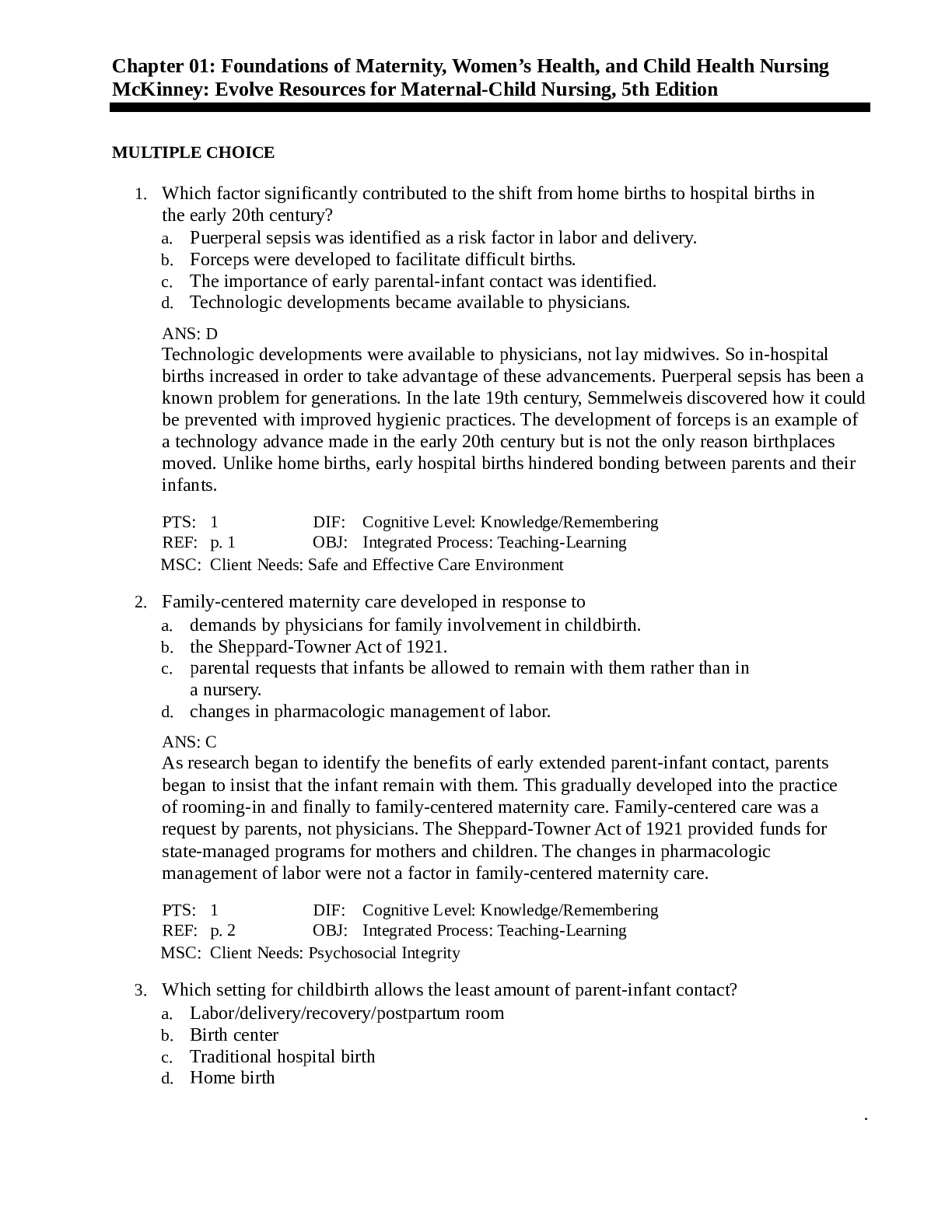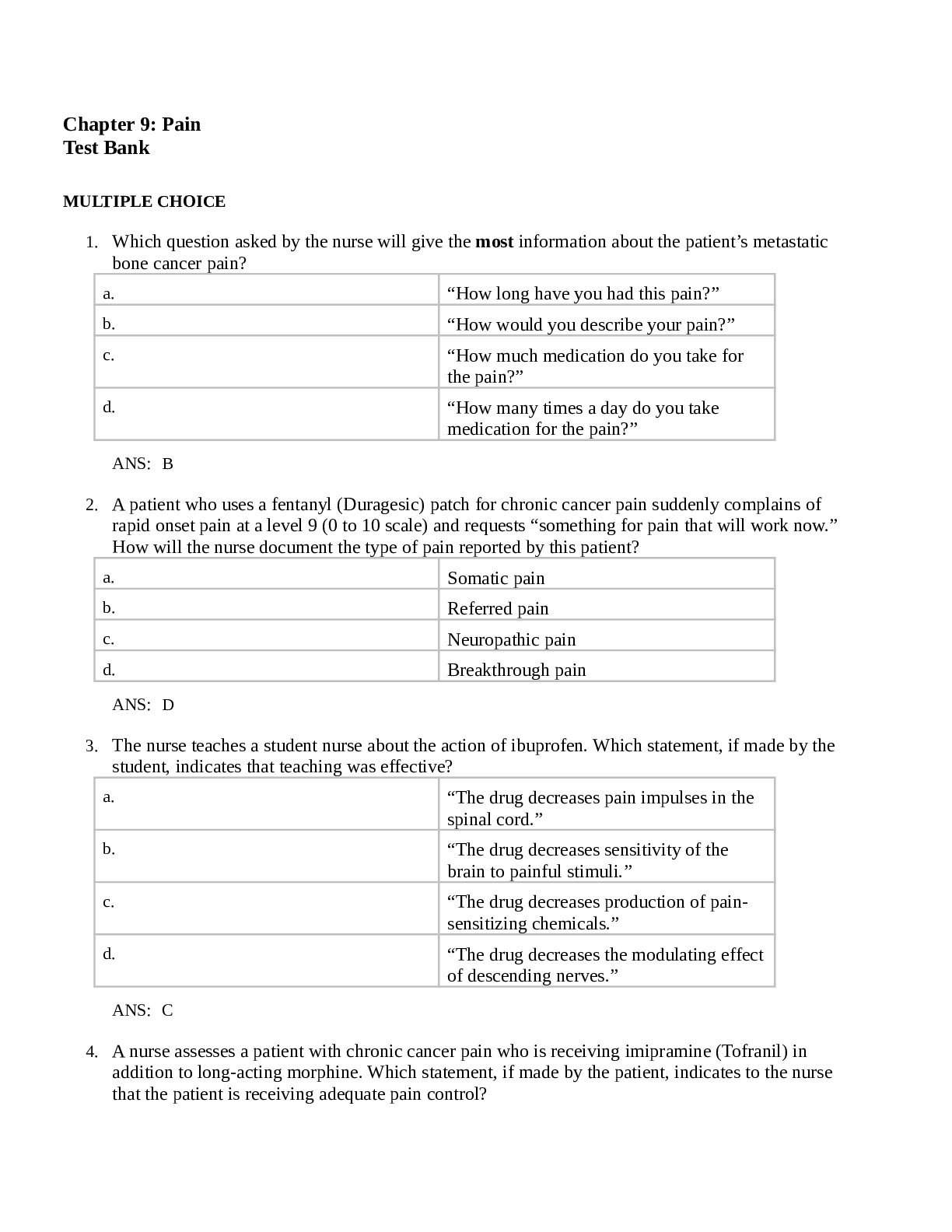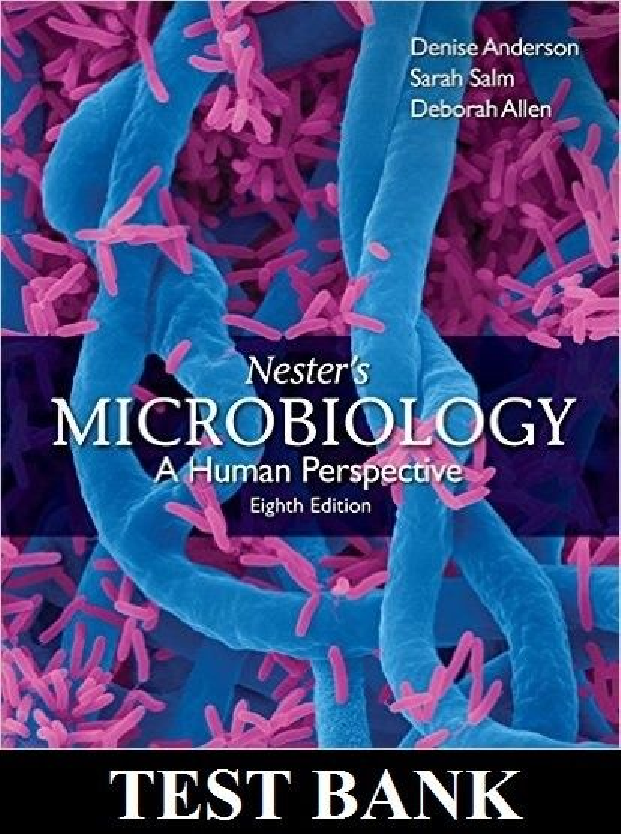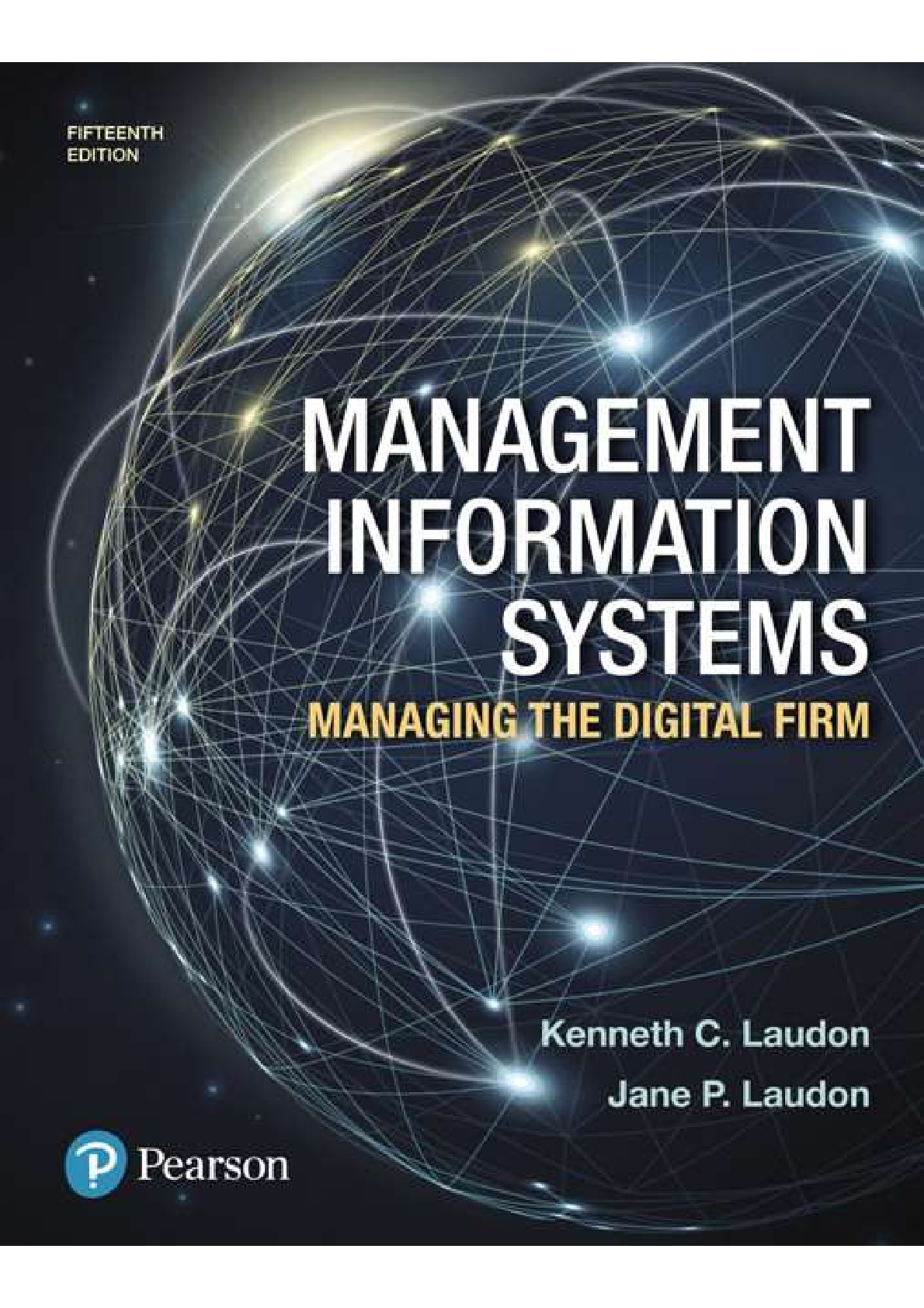Chemistry > TEST BANKS > Chemistry (The Central Science), Edition 11, Brown, LeMay, Bursten, Murphy, Woodward (completed all (All)
Chemistry (The Central Science), Edition 11, Brown, LeMay, Bursten, Murphy, Woodward (completed all chapters_ answered and updated latest ) A+ help
Document Content and Description Below
Chemistry (The Central Science), Edition 11, Brown, LeMay, Bursten, Murphy, Woodward (all chapters complete, answered and Newly updated latest ) A+ Solution Guide Chemistry (The Central Science), Ed... ition 11, Brown, LeMay, Bursten, Murphy, Woodward Test Bank Chemistry: The Central Science, 11th Edition Theodore E. Brown, Emeritus) University of Illinois H. Eugene LeMay, University of Nevada, Reno Bruce E. Bursten, Worcester Polytechnic Institute Catherine Murphy, University of Illinois at Urbana-Champaign Patrick Woodward, The Ohio State University Table of Contents 1 Introduction: Matter and Measurement 1 2 Atoms, Molecules, and Ions 36 3 Stoichiometry: Calculations with Chemical Formulas and Equations 78 4 Aqueous Reactions and Solution Stoichiometry 118 5 Thermochemistry 164 6 Electronic Structure of Atoms 210 7 Periodic Properties of the Elements 254 8 Basic Concepts of Chemical Bonding 296 9 Molecular Geometry and Bonding Theories 340 10 Gases 392 11 Intermolecular Forces, Liquids, and Solids 436 12 Modern Materials 480 13 Properties of Solutions 526 14 Chemical Kinetics 572 15 Chemical Equilibrium 626 16 Acid—Base Equilibria 666 17 Additional Aspects of Aqueous Equilibria 718 18 Chemistry of the Environment 766 19 Chemical Thermodynamics 800 20 Electrochemistry 842 21 Nuclear Chemistry 892 22 Chemistry of the Nonmetals 930 23 Metals and Metallurgy 980 24 Chemistry of Coordination Compounds 1012 25 The Chemistry of Life: Organic and Biological Chemistry 1050 Appendices A Mathematical Operations 1104 B Properties of Water 1111 C Thermodynamic Quantities for Selected Substances at 298.15 K (25 °C) 0000 D Aqueous Equilibrium Constants 0000 E Standard Reduction Potentials at 25 °C 0000 Answers to Selected Exercises A-1 Answers to “Give It Some Thought” A-00 Chemistry, 11e (Brown) Chapter 1: Introduction: Matter and Measurement Multiple Choice and Bimodal 1) Solids have a shape and are not appreciably . A) definite, compressible B) definite, incompressible C) indefinite, compressible D) indefinite, incompressible E) sharp, convertible Answer: A Diff: 1 Page Ref: Sec. 1.2 2) is the chemical symbol for elemental sodium. A) S B) W C) So D) Na E) Sn Answer: D Diff: 1 Page Ref: Sec. 1.2 3) If matter is uniform throughout, cannot be separated into other substances by physical processes, but can be decomposed into other substances by chemical processes, it is called a (an) . A) heterogeneous mixture B) element C) homogeneous mixture D) compound E) mixture of elements Answer: D Diff: 4 Page Ref: Sec. 1.2 4) The symbol for the element potassium is . A) Pt B) P C) K D) S E) Ca Answer: C Diff: 1 Page Ref:Sec. 1.2 5) The symbol for the element magnesium is . A) Rb B) Mn C) Ne D) Si E) Mg Answer: E Diff: 1 Page Ref:Sec. 1.2 6) The initial or tentative explanation of an observation is called a(n) . A) law B) theory C) hypothesis D) experiment E) test Answer: C Diff: 2 Page Ref:Sec. 1.3 2 7) A concise verbal statement or mathematical equation that summarizes a broad variety of observations and experiences is called a(n) . A) law B) theory C) hypothesis D) experiment E) test Answer: A Diff: 2 Page Ref:Sec. 1.3 8) A separation process that depends on differing abilities of substances to form gases is called . A) filtration B) solvation C) distillation D) chromatography E) all of the above are correct Answer: C Diff: 3 Page Ref:Sec. 1.3 9) The SI unit for mass is . A) kilogram B) gram C) pound D) troy ounce E) none of the above Answer: A Diff: 1 Page Ref:Sec. 1.4 10) A one degree of temperature difference is the smallest on the A) Kelvin B) Celsius C) Fahrenheit D) Kelvin and Celsius E) Fahrenheit and Celsius Answer: C Diff: 3 Page Ref:Sec. 1.4 temperature scale. 11) A common English set of units for expressing velocity is miles/hour. The SI unit for velocity is ? A) km/hr B) km/s C) m/hr D) m/s E) cm/s Answer: D Diff: 3 Page Ref:Sec. 1.4 3 12) The unit of force in the English measurement system is 1b • ft . The SI unit of force is the Newton, which is s 2 in base SI units. A) g • cm s 2 B) kg • m hr2 C) kg • m s 2 D) g • m s 2 E) g • cm s Answer: C Diff: 4 Page Ref:Sec. 1.4 13) Momentum is defined as the product of mass and velocity. The SI unit for momentum is ? A) kg • ms B) kg • m hr C) g • m s D) g • km s E) kg • km hr Answer: A Diff: 4 Page Ref:Sec. 1.4 14) The SI unit of temperature is . A) K B) °C C) °F D) t E) T Answer: A Diff: 2 Page Ref:Sec. 1.4 15) The temperature of 25°C is in Kelvins. A) 103 B) 138 C) 166 D) 248 E) 298 Answer: E Diff: 1 Page Ref:Sec. 1.4 4 16) The freezing point of water at 1 atm pressure is . A) 0°F B) 0 K C) 0°C D) -273°C E) -32°F Answer: C Diff: 2 Page Ref:Sec. 1.4 17) A temperature of 400 K is the same as °F. A) 261 B) 286 C) 88 D) 103 E) 127 Answer: A Diff: 2 Page Ref:Sec. 1.4 18) A temperature of K is the same as 63°F. A) 17 B) 276 C) 290 D) 29 E) 336 Answer: C Diff: 2 Page Ref:Sec. 1.4 19) 1 nanometer = A) 1000 B) 0.1 C) 0.01 D) 1 E) 10 Answer: A Diff: 2 Page Ref:Sec. 1.4 picometers 20) 1 picometer = centimeters A) 1 × 1010 B) 1 × 1010 C) 1 × 108 D) 1 × 108 E) 1 × 1012 Answer: B Diff: 2 Page Ref:Sec. 1.4 21) 1 kilogram = milligrams A) 1 × 106 B) 1,000 C) 10,000 D) 1,000,000 E) none of the above Answer: D Diff: 2 Page Ref:Sec. 1.4 5 24) The density (in g/cm3 ) of a gold nugget that has a volume of 1.68 cm3 and a mass of 32.4 g is . 22) "Absolute zero" refers to . A) 0 Kelvin B) 0° Fahrenheit C) 0° Celsius D) °C + 9/5(°F - 32) E) 273.15°C Answer: A Diff: 1 Page Ref:Sec. 1.4 23) An object will sink in a liquid if the density of the object is greater than that of the liquid. The mass of a sphere is 9.83 g. If the volume of this sphere is less than cm3 , then the sphere will sink in liquid mercury (density = 13.6 g/cm3 ). A) 0.723 B) 1.38 C) 134 D) 7.48 E) none of the above Answer: A Diff: 3 Page Ref:Sec. 1.4 volume of A) 0.171 B) 644 C) 10.5 D) 0.00155 E) 5.84 Answer: E cm3 . Diff: 2 Page Ref:Sec. 1.4 26) The density of silver is 10.5 g/cm3 . A piece of silver that occupies a volume of 23.6 cm3 would have a mass of g. A) 248 B) 0.445 C) 2.25 D) 112 E) 23.6 Answer: A Diff: 2 Page Ref:Sec. 1.4 25) The density of silver is 10.5 g/cm3 . A piece of silver with a mass of 61.3 g would occupy a A) 0.0519 B) 19.3 C) 54.4 D) 0.0184 E) 32.4 Answer: B Diff: 1 Page Ref:Sec. 1.4 6 A) 6.75 × 103 B) 3.45 C) 148 D) 6.75 × 103 E) 34.5 Answer: B Diff: 3 Page Ref:Sec. 1.4 27) A certain liquid has a density of 2.67 g/cm3 . 1340 g of this liquid would occupy a volume of L. A) 1.99 × 103 B) 50.2 C) 3.58 D) 35.8 E) 0.502 Answer: E Diff: 2 Page Ref:Sec. 1.4 28) A certain liquid has a density of 2.67 g/cm3 . 30.5 mL of this liquid would have a mass of Kg. A) 81.4 B) 11.4 C) 0.0875 D) 0.0814 E) 0.0114 Answer: D Diff: 2 Page Ref:Sec. 1.4 29) Osmium has a density of 22.6 g/cm3 . The mass of a block of osmium that measures 1.01 cm × 0.233 cm × 0.648 cm is g. 30) 3.337 g/cm3 = A) 3.337 × 109 B) 3.337 × 105 C) 3337 D) 0.3337 E) 333.7 Answer: C Diff: 2 Page Ref:Sec. 1.4 [Show More]
Last updated: 2 years ago
Preview 1 out of 804 pages
, Edition 11, Brown.png)
Buy this document to get the full access instantly
Instant Download Access after purchase
Buy NowInstant download
We Accept:

Reviews( 0 )
$15.00
Can't find what you want? Try our AI powered Search
Document information
Connected school, study & course
About the document
Uploaded On
Sep 07, 2021
Number of pages
804
Written in
Additional information
This document has been written for:
Uploaded
Sep 07, 2021
Downloads
0
Views
111







.png)





.png)




.png)


